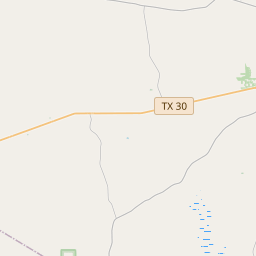Site of Cumberland Presbyterian Church
Historical marker location:






Site of Cumberland Presbyterian Church
On this site once stood the first church building erected In Huntsville. In 1849, Cumberland Presbyterian Church trustees A. C. King and T. J. Caldwell purchased this land on behalf of the congregation, and the building was constructed soon thereafter. The sanctuary also served as a house of worship for other denominations in town when it was not in use by the Cumberland Presbyterians.
Symbolic of the Cumberland Presbyterian movement in Texas, the Huntsville Church was founded on the pioneering efforts of itinerant preachers in Texas such as Sumner Bacon and Andrew Jackson McGown. McGown published the denomination's newspaper, the Texas Presbyterian, in Huntsville from 1849 until it ceased publication in 1856. Church members first met in homes, in the courthouse or in other public buildings, with the Rev. Weyman Adair and the Rev. Milton Estill providing early leadership to the congregation.
The Cumberland Presbyterian Church in Huntsville succumbed to the ravages of the Civil War and the 1867 yellow fever epidemic and eventually disbanded. The First Christian Church acquired the property in 1871 and moved the building across the street about 1901, after which time it fell into disrepair and eventually collapsed.
Although no longer extant, the Cumberland Presbyterian Church remains a significant part of the early religious and cultural history of Huntsville.
(2001)
As one of the most visible programs of the Texas Historical Commission (THC), historical markers commemorate diverse topics in Texas history, including: the history and architecture of houses, commercial and public buildings, religious congregations, and military sites; events that changed the course of local and state history; and individuals who have made lasting contributions to the state, community organizations, and businesses.
Texas was once an independent country: After winning its independence from Mexico in 1836, Texas became its own country, known as the Republic of Texas. It existed as an independent nation for nine years before being annexed by the United States in 1845.
In 1836, Walker County was officially established and named after Samuel Hamilton Walker, a Texas Ranger captain who died in the Mexican-American War. The county became a hub for trade and commerce, with the town of Huntsville serving as the county seat. The early residents engaged in farming, ranching, and timber industries, which became the backbone of the local economy.
During the Civil War, Walker County played a significant role as a major supplier of food and provisions to the Confederate army. However, the county also faced its share of hardships, including raids by Union troops and the devastation caused by the war. After the war, Walker County experienced a period of reconstruction and gradual recovery.
In the late 19th and early 20th centuries, Walker County saw significant progress and development. The expansion of railroads brought new opportunities for trade and transportation, and the discovery of oil in the early 1900s further boosted the local economy. In recent decades, Walker County has continued to grow and evolve, embracing modern industries while preserving its unique heritage and natural beauty. Today, the county is known for its thriving educational institutions, correctional facilities, and vibrant community.
Walker County Timeline
This timeline provides a concise overview of the key events in the history of Walker County, Texas.
- 1836: Walker County is established
- 1846: Huntsville becomes the county seat
- 1861: Walker County residents vote for secession from the Union
- 1870: The Houston and Great Northern Railroad reaches Huntsville
- 1900: The town of New Waverly is incorporated
- 1936: Sam Houston State Teachers College is established
- 1965: The Texas Department of Corrections is established in Huntsville
- 1970: San Jacinto Mall opens in Baytown
- 1999: The City of Huntsville celebrates its 150th anniversary
- 2007: The Texas Department of Criminal Justice moves its headquarters to Huntsville